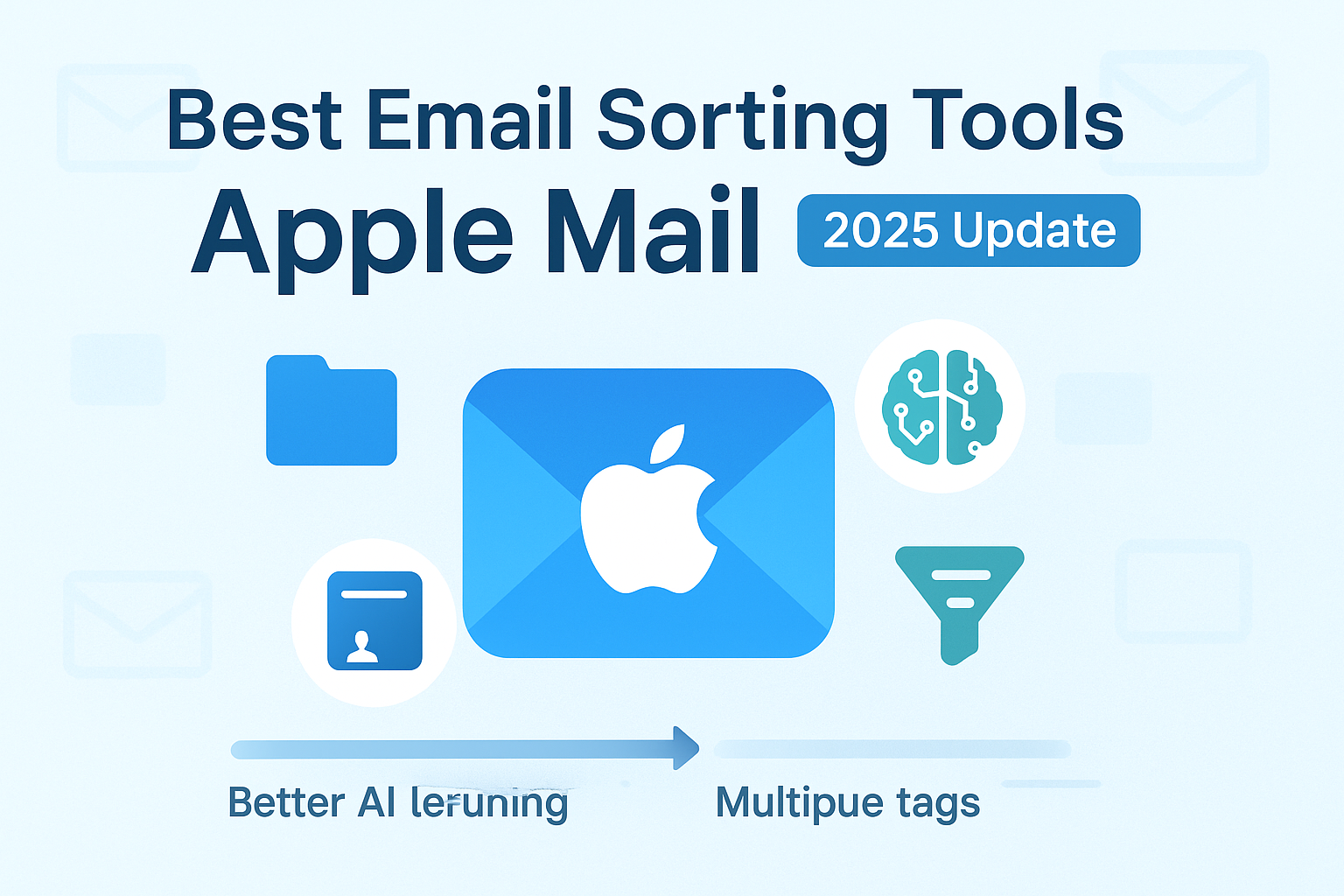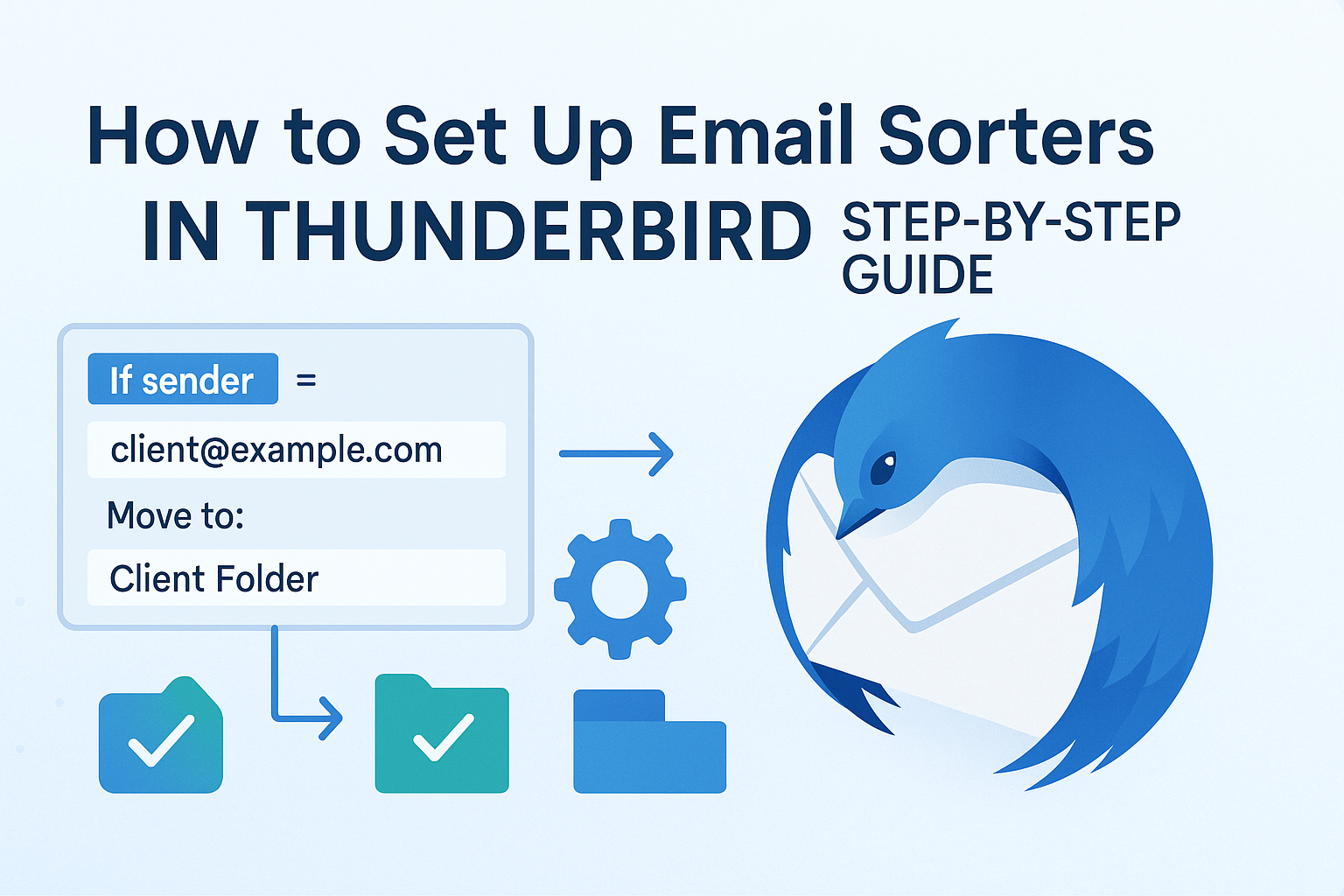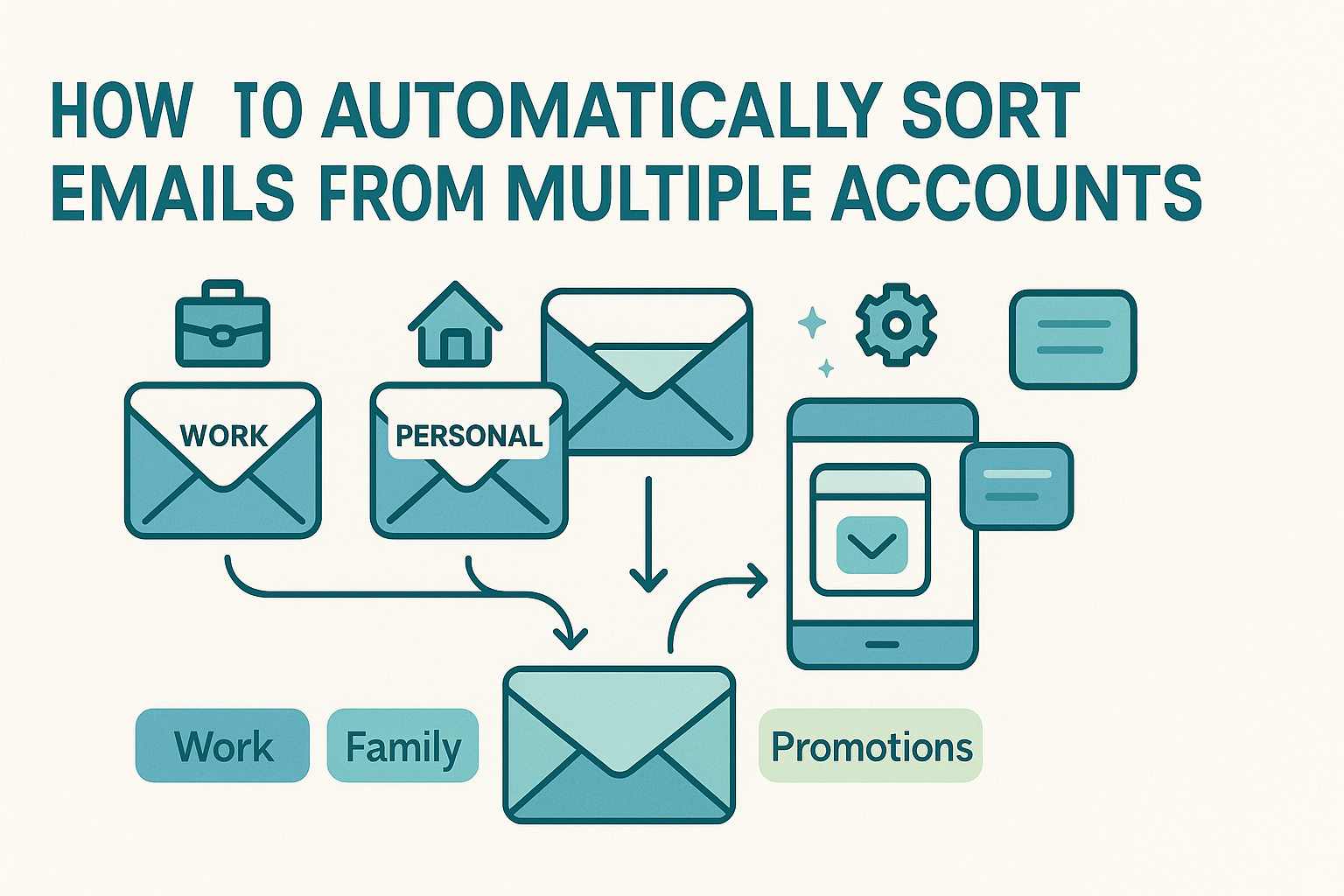Top email sorters for sales teams help track and prioritize leads by organizing inboxes, automating follow-ups, and highlighting high-value messages. In sales, every minute counts, missing a prospect’s reply, delaying a quote, or overlooking a demo request can cost deals. As email volumes grow across CRM systems, support tools, and marketing platforms, manual inbox management becomes overwhelming.
A smart email sorter allows sales reps to stay focused by:
- Flagging urgent messages
- Grouping related conversations
- Tracking follow-up tasks automatically
Instead of digging through cluttered inboxes, reps can respond faster, manage leads more effectively, and spend more time building relationships that drive revenue.
What Are Sales Email Workflows?
Sales email workflows are structured systems that help sales professionals manage high volumes of email communication across different stages of the sales cycle. From prospecting and inbound inquiries to nurturing qualified leads and closing deals, each type of email requires its own timing, tone, and follow-up strategy.
For example, a lead asking about pricing or a demo should be followed up within hours, while a newsletter or general inquiry can be handled later. Without a system in place, it’s easy for priority messages to get lost in a busy inbox.
Email sorting tools make this process more manageable by automatically categorizing messages into actionable folders, such as “Hot Leads,” “Prospecting,” or “Follow-Up.” Filters can detect keywords like “interested in pricing” or “schedule a demo” and move those emails into the right queue for faster response.
Features like reminders, snoozes, and automated follow-up scheduling further support the workflow. Reps no longer need to mentally track every task, the system flags what’s important, reduces clutter, and keeps communication flowing smoothly.
By using well-defined sales email workflows, teams can respond faster, stay organized, and focus on building stronger relationships, without missing key opportunities.
Top Features to Look for in Email Sorters for Sales Teams
Choosing the right email sorting tool for sales teams means aligning features with real-world needs—whether you’re managing outbound outreach, handling inbound leads, or coordinating account follow-ups.
One of the most essential capabilities is automatic tagging and filtering. Tools should detect keywords, sender domains, or subject lines to sort emails into categories like “High-Priority Leads,” “Follow-Ups,” or “Low-Priority.” Advanced sorters also let you define workflows, such as auto-prioritizing quote requests, snoozing less urgent threads, or flagging key accounts for quick action.
Built-in reminders and snooze functions are critical for keeping multi-step sales cadences on track. Reps shouldn’t need to manually monitor every conversation, automated nudges keep follow-ups timely and reduce dropped leads.
Cross-platform access is equally important. Sales reps often work from mobile devices while traveling, so the tool must offer full functionality across both desktop and smartphones. Custom notification settings are also key, helping reps stay focused by separating lead alerts from internal updates or marketing emails.
In team-based sales environments, collaboration features matter. Reps may need to view colleague inboxes, tag shared leads, or track deal progress across accounts. Lastly, email analytics, like response time, lead volume, and open rates, give managers insight into team performance and help spot gaps in the pipeline.
The right combination of sorting, automation, and visibility turns your inbox from a cluttered task list into a streamlined sales engine.
CRM Integrations and the Power of Salesforce Email Integration
An email sorter’s true value for sales teams lies in its ability to integrate with CRM systems, ensuring that messages aren’t only organized but tied directly to your prospect database. Integration with platforms like HubSpot, Microsoft Dynamics, and especially Salesforce is a game-changer. With Salesforce email integration, incoming messages can be automatically logged under the correct contact record, update lead status, or even trigger task creation and alerts, without manual copy-paste. For example, when a lead responds with “ready to proceed,” that message is routed by your email sorter into a “Hot Leads” folder, tagged with a reminder, and then logged in Salesforce as activity. This streamlined workflow keeps reps focused on selling, not data entry.
In an environment where multiple reps may touch the same account, sales-CRM integration enhances visibility and coordination. Every message is visible in the CRM timeline, ensuring full context for team members reviewing a lead’s history. This eliminates the risk of follow-up misfires or redundant outreach, while reinforcing accountability. It also supports cross-functional alignment, marketing, support, and operations can see when a prospect has engaged via email and adjust campaigns or internal processes accordingly. CRM integrations like Salesforce help close the gap between email sorting and pipeline execution, transforming communication into pipeline momentum.
Case Comparison: Recruitment Versus Sales Sorting Parallels
While sales teams focus on converting prospects into customers, recruitment teams nurture candidates towards hire. Both disciplines face similar challenges: high volumes of inbound communications, multi-touch follow-ups, and the risk of manual errors. Just as HR professionals rely on email sorters for HR recruiters to sift applications, flag priority outreach, and coordinate hiring steps, sales reps benefit from identical capabilities, only applied to leads instead of candidates. The shared organizational goals make lessons from recruitment sorting relevant to sales: effective tagging, folder structure, and automation aren’t limited to one domain, they scale across industries demanding follow-up precision, stakeholder coordination, and candidate or lead experience excellence.
Auto‑Reply Features That Keep Leads Warm
Timely acknowledgment makes all the difference in lead engagement. Whether it’s a reply requesting a demo, expressing interest in pricing, or asking for a case study, every response matters. This is where email sorters with auto‑reply become a game-changer for sales teams. Instead of writing every acknowledgment, reps can create templated replies tied to specific trigger conditions, for instance, sending a courteous introduction message when an initial inquiry arrives, or dispatching next‐steps information after a demo request.
Consider the benefits: prospects feel heard immediately, conversations remain tight and timely, and your sales cadence gains momentum. Reps can customize templates with placeholders, like name or product interest, ensuring messages feel personal. The tool manages both sorting and automation simultaneously, sparing reps the repetitive work and reinforcing professional engagement at scale.
Advanced Automation with Zapier Integration
Email sorting becomes significantly more powerful when connected to tools your sales team already uses. With Zapier, you can automate the flow of lead data between your inbox, CRM, calendar, and task manager, without relying on manual updates or developer support.
For example, when a lead email is sorted into a “Hot Leads” folder, Zapier can:
- Create a new contact in HubSpot
- Send an alert to the account executive via Slack
- Add a calendar event for a scheduled follow-up
These automated workflows turn your email sorter into a central dispatch system. Instead of toggling between tools and updating data manually, reps get real-time notifications and task assignments across platforms, keeping momentum high and nothing overlooked.
By integrating sorting rules with Zapier:
- You reduce manual work
- Eliminate delays in lead follow-up
- Improve pipeline visibility and response time
Automation at this level helps sales teams stay organized, respond faster, and operate more efficiently, without needing technical support to maintain the system.
Measuring Sales Inbox Efficiency and Tracking Results
Automation is only impactful when it moves the needle on sales performance. To prove ROI, teams must measure key metrics like response times, pipeline velocity, lead touch frequency, and conversion rates. Effective email sorters provide visibility into inbox performance, showing averages on how quickly initial responses are sent, how often hot leads receive follow-ups, and where bottlenecks occur.
These metrics offer insight into where workflows need adjustment. A long delay in initial replies, for example, could indicate misconfigured priorities, while a poor conversion ratio might point to inconsistent lead classification. Sales teams should use these insights to improve both tool configurations and team processes. For a deeper dive into the metrics that matter, check out email sorting success metrics, which guide teams in setting goals and benchmarking progress.
Comparing Top Email Sorting Tools for Sales
Sales organizations come in many shapes, some are heavily CRM‑centric, others rely on mobile agility, and some work in remote or hybrid environments. Choosing the right sorter means matching features to strategy: does it integrate with Salesforce seamlessly? Does it auto-reply with branded templates? Can it automate workflows via Zapier? Is it mobile‑friendly for reps on the go? How well can it measure performance at scale?
For a broader view of the best options across industries, see our review of top email sorting software, which compares platforms based on usability, collaboration, AI sophistication, integration, and price. Sales teams can use it to narrow down tools with CRM depth, automation power, and mobile readiness that best fit their workflow. Whether you’re operating solo, part of a distributed SDR team, or managing a high-velocity enterprise process, choosing the right tool ensures your inbox becomes a growth driver, not a bottleneck.
Advanced Lead Routing Strategies for Teams
As sales efforts scale, it becomes crucial to route inbound leads smartly, ensuring every enquiry lands with the right rep at the right time. Advanced email sorters support complex workflows that assign leads based on factors like territory, deal size, or product line. For instance, separate folder rules may assign leads with “@enterprise.com” to a dedicated team, while smaller accounts go to field reps. Round-robin algorithms, similar to those in lead routing for sales teams, ensure fair distribution across representatives. For VIP contacts, VIP-tagging filters funnel high-value messages directly to senior accounts or execs, bypassing standard queues. This precision routing boosts speed-to-first contact and balances workload automatically, ensuring no lead is missed and no sales rep is overburdened.
Implementation Roadmap: From Pilot to Rollout
Launching a sorting system begins with a focused pilot. Choose one user or small sales pod, define priority folders, such as “New Leads,” “Hot Leads,” “Follow-Up”, and set up folder-based rule triggers for each. Add CRM integration and auto-replies, and monitor performance over several weeks. Track key metrics like average first response time and lead conversion rate.
Once the pilot shows success, document your setup, folders, rules, tags, templates, and train additional reps. Establish a cadence for reviewing and refining filters monthly or quarterly. Designate a product owner to manage future rule changes. Proper onboarding makes adoption smoother, ensures consistency across the team, and prevents variation that could erode system impact.
Best Practices for Sales Email Sorting Efficiency
Consistency is key: naming conventions for folders and tags should be standardized across Salesforce, shared inboxes, and email clients. Templates for auto-replies must balance personalization with efficiency, Insert placeholders like {FirstName} or {Company} in acknowledgments. Prioritization logic should reflect real business workflows, e.g., high-value or active deals take precedence, while newsletters remain in a low-priority folder. Collaboration should include shared rules, visibility across the team, and paths for handing off contacts. Finally, schedule quarterly audits to review rule efficacy, identify missed leads, and prune outdated templates or filters.
Troubleshooting Common Issues
Automated setups rarely fail, rules can overlap, auto-replies may trigger inappropriately, and lead assignments might duplicate or miss contacts. Begin troubleshooting by checking filter order; many platforms evaluate rules top-down. If a campaign email isn’t being tagged correctly, ensure folder names are exact and rules are active across all connected accounts. Invalid placeholders in templates may break replies. In shared inboxes, tags may not apply if ownership logic is misconfigured. Use logs or dashboards to trace messages through the system, starting with rule triggers, then follow-ups, then CRM activity, to pinpoint the failure. Maintain clarity in documentation to reduce overlap and ensure clarity during debugging processes.
Frequently Asked Questions
Can email sorters replace a CRM?
No, email sorters organize and automate your inbox, but they don’t provide deal tracking, pipeline management, or forecasting. Instead, they enhance CRM workflows by ensuring communication is logged and delivered consistently.
How does auto‑reply affect personalization?
When used correctly with templates and dynamic fields, auto-replies can feel personal. Avoid generic phrasing, pause automation when reaching out to existing contacts, and always follow up manually to maintain authenticity.
What’s the ROI of lead routing automation?
Faster response times and consistent follow-ups typically result in higher contact rates and more booked meetings. Organizations see ROI in improved pipeline velocity and reduced manual admin.
How often should we audit email‑sorting logic?
Monthly for high-volume teams and quarterly for smaller groups. Audits help identify filter decay, template inconsistencies, or rule conflicts, keeping your system sharp and relevant.
What if AI tools mis‑prioritize leads?
Monitor performance through dashboards (e.g., lead conversion before/after). Retrain your AI by correcting tags on misclassified messages, refine your criteria, or fall back to manual rules until the model recalibrates.




